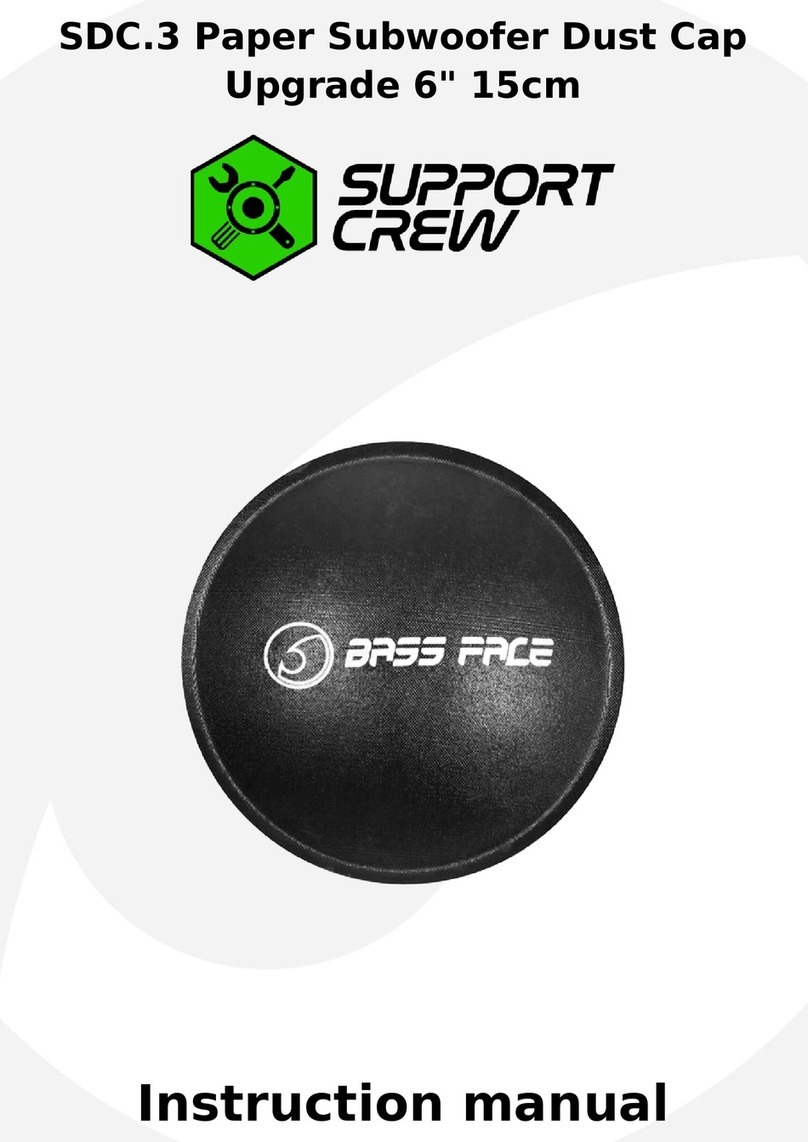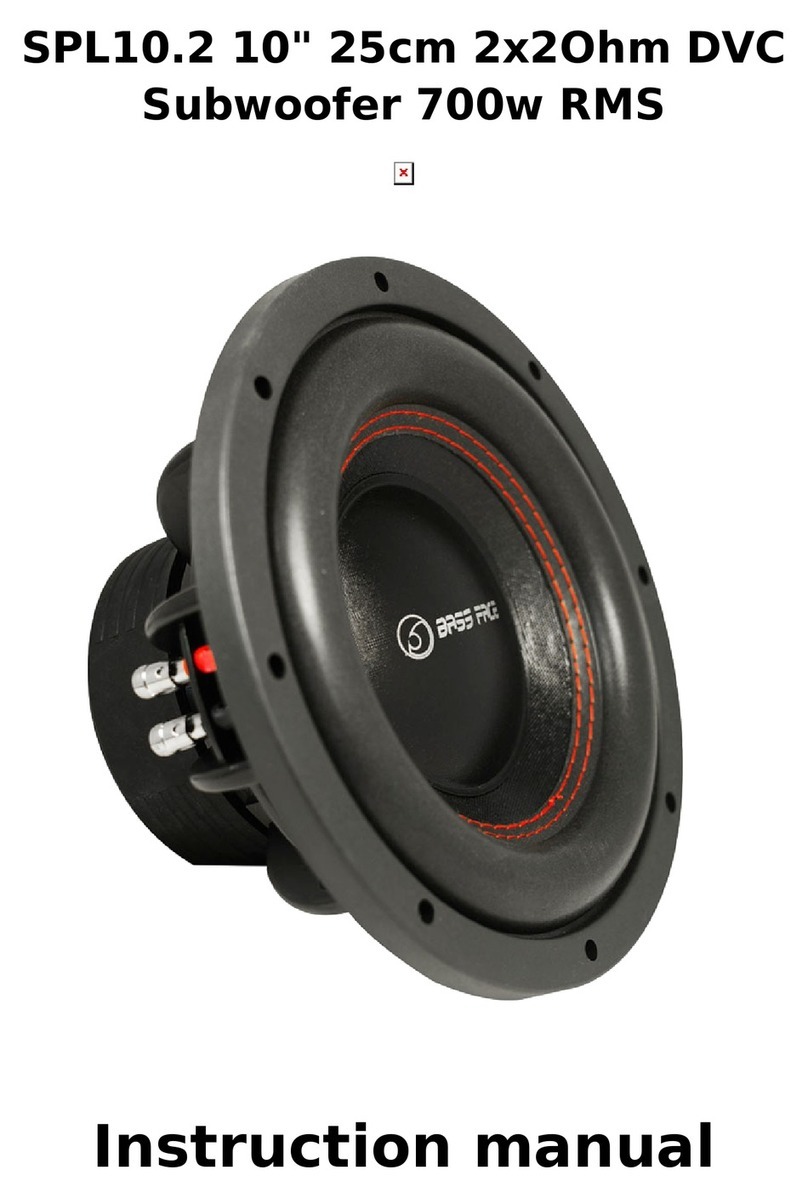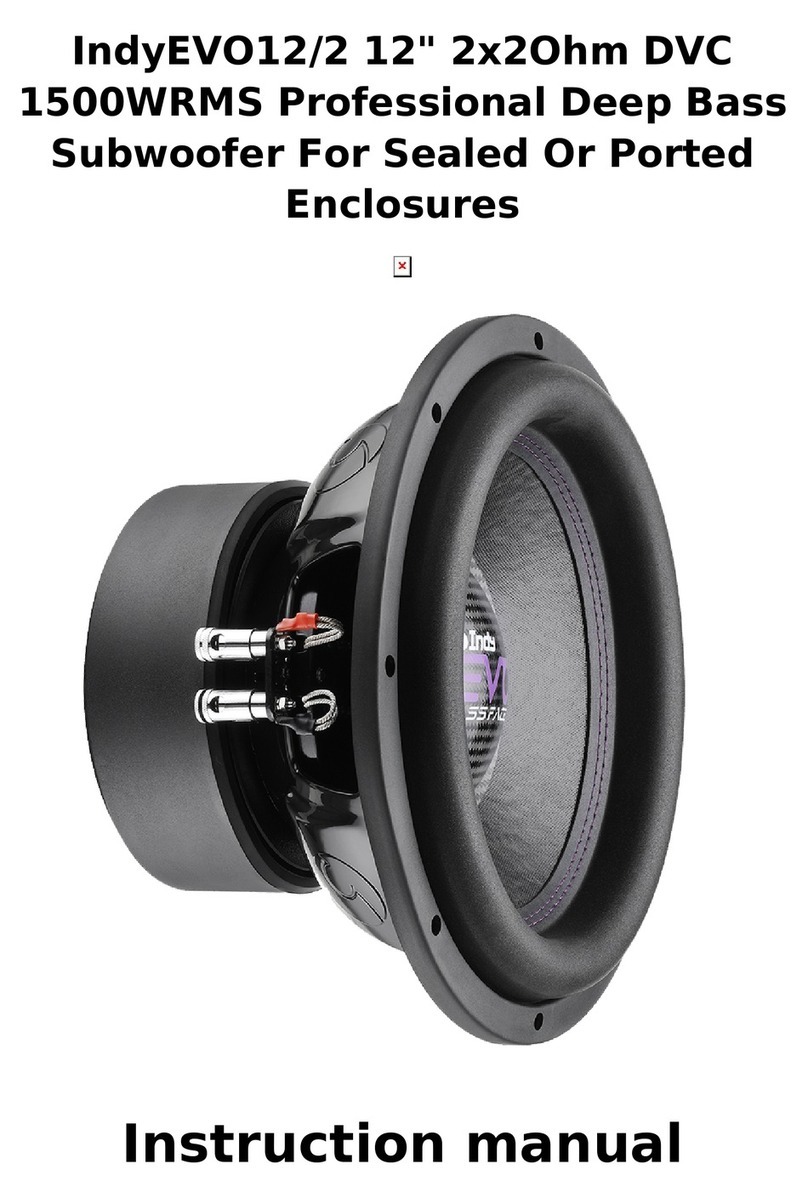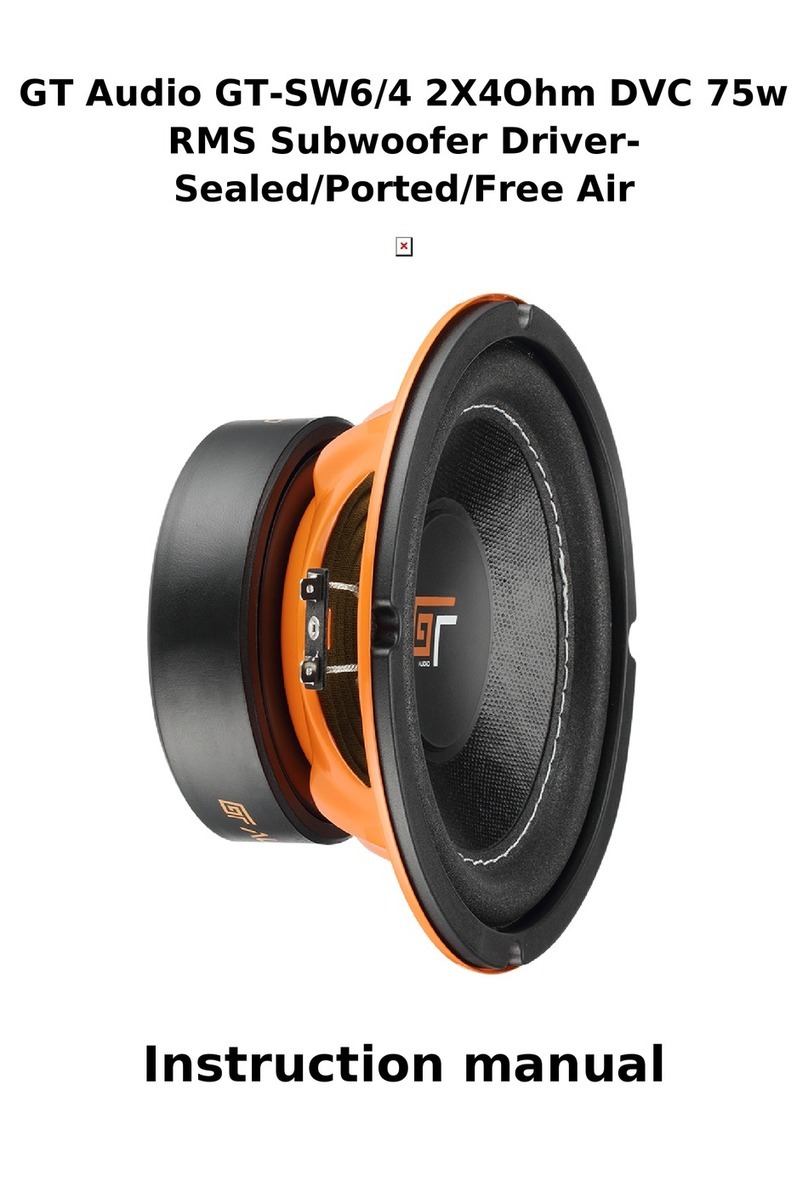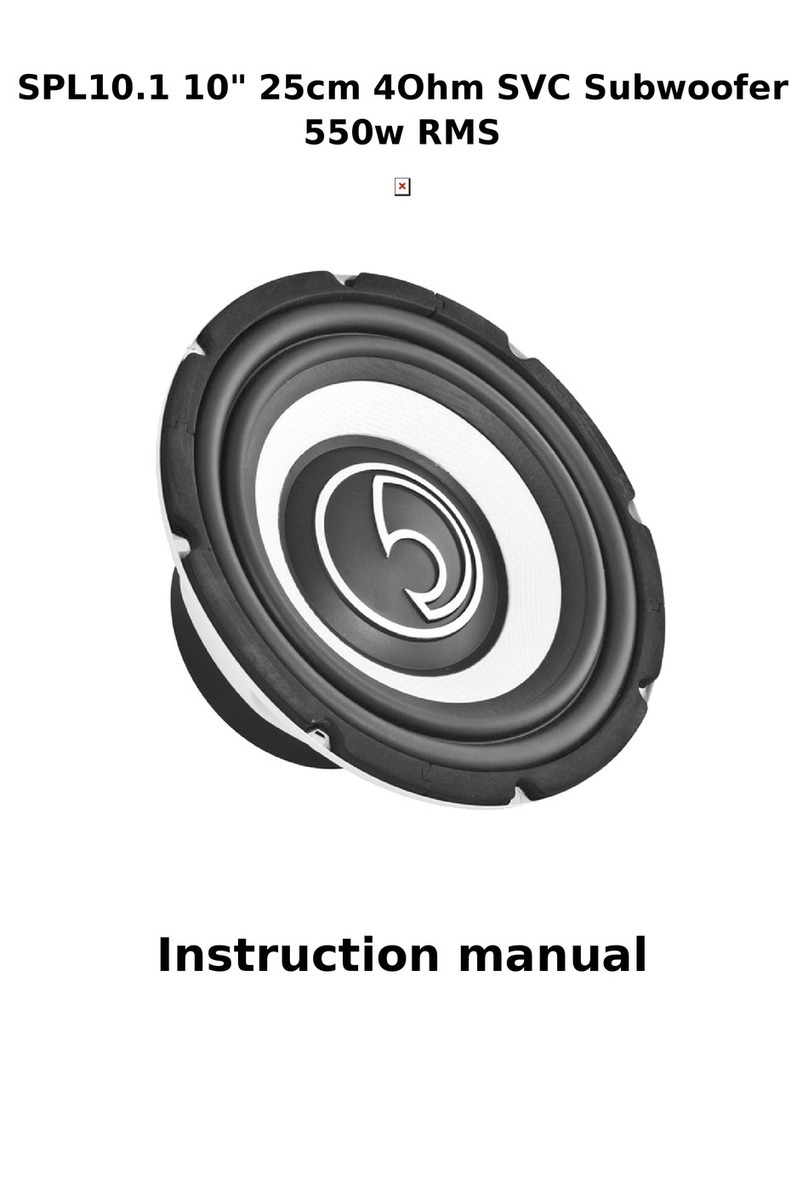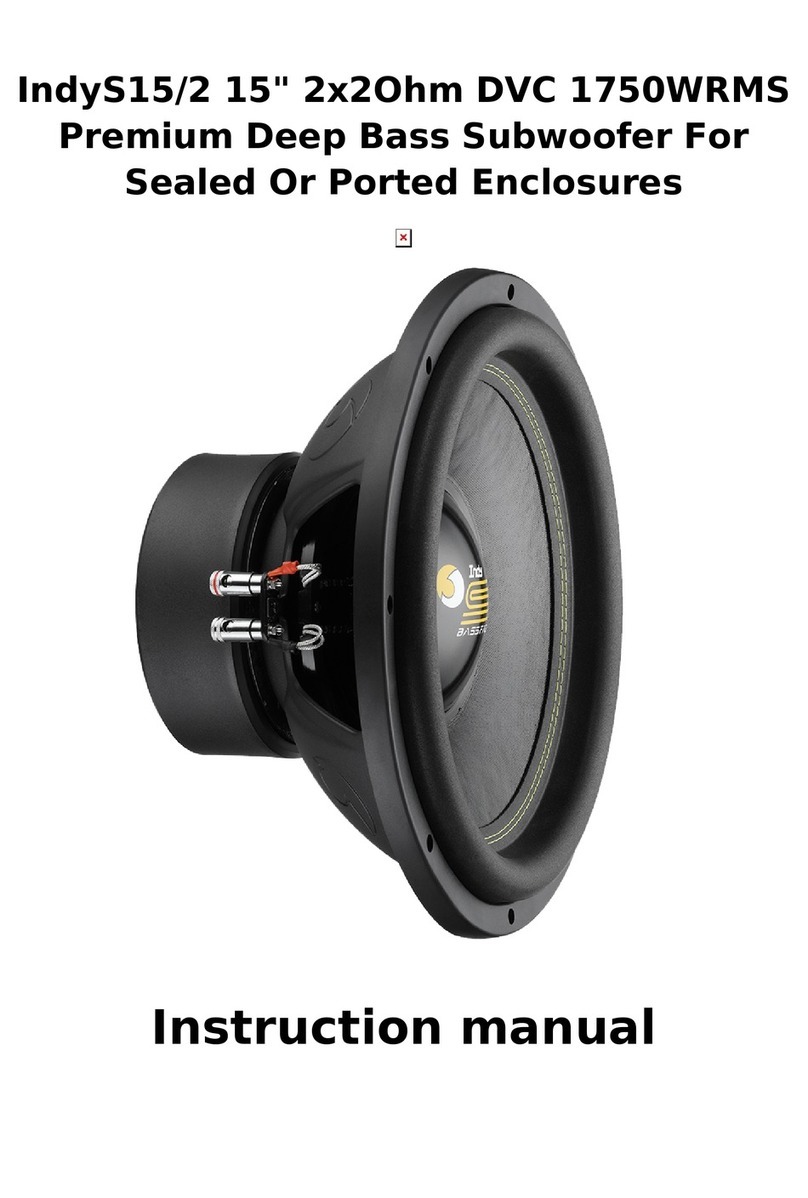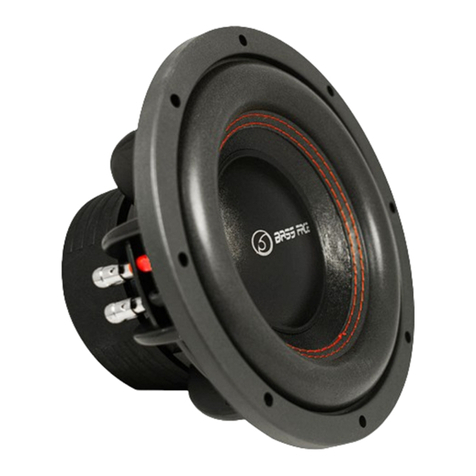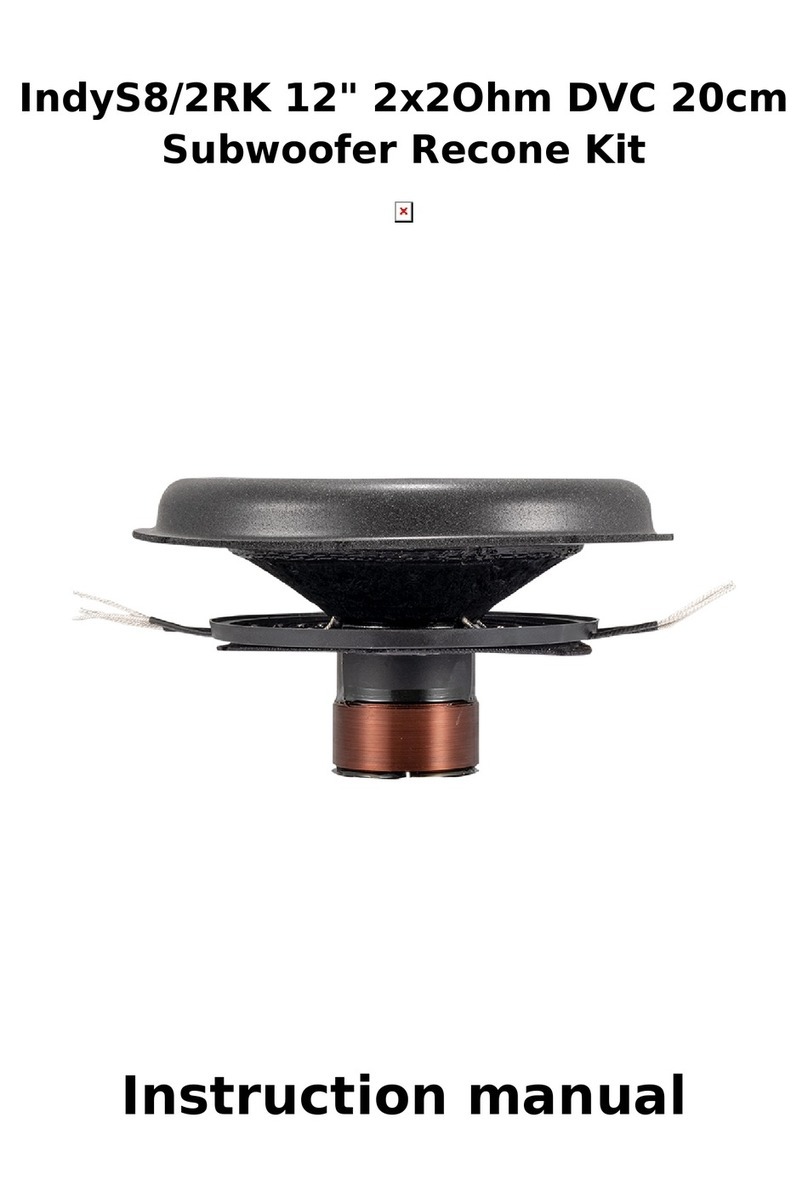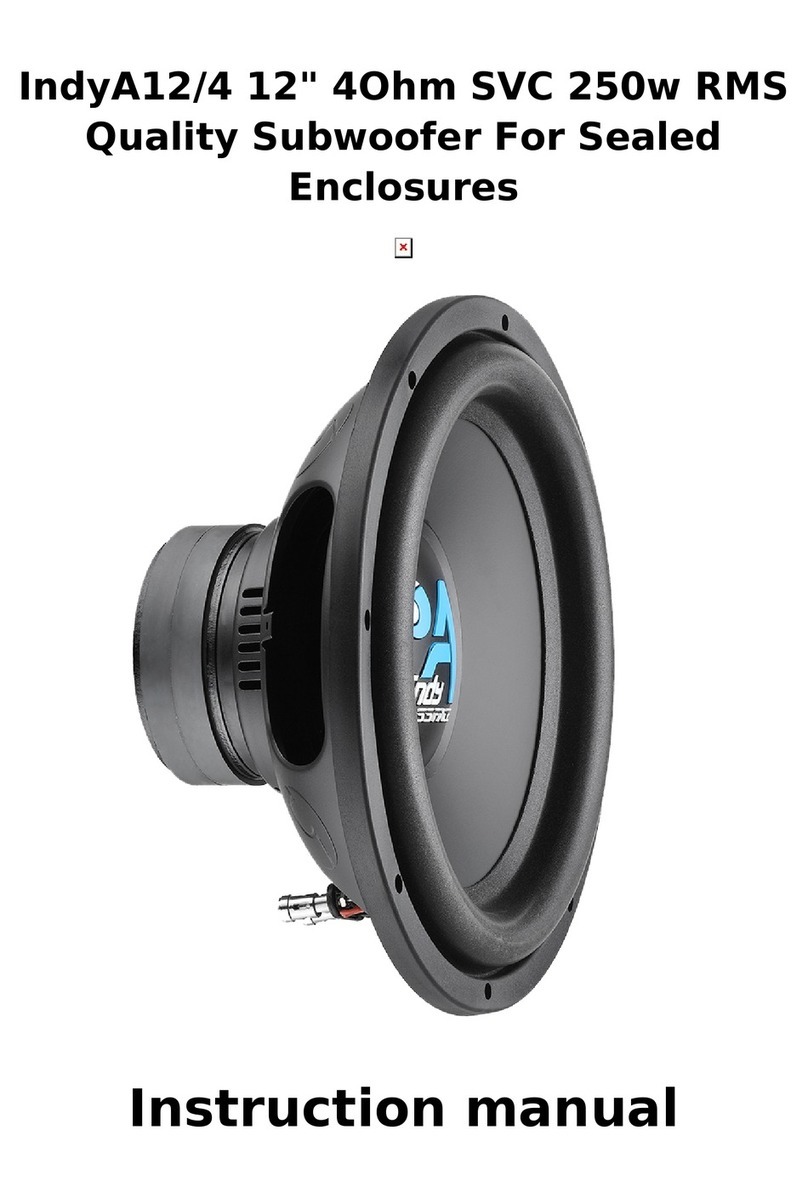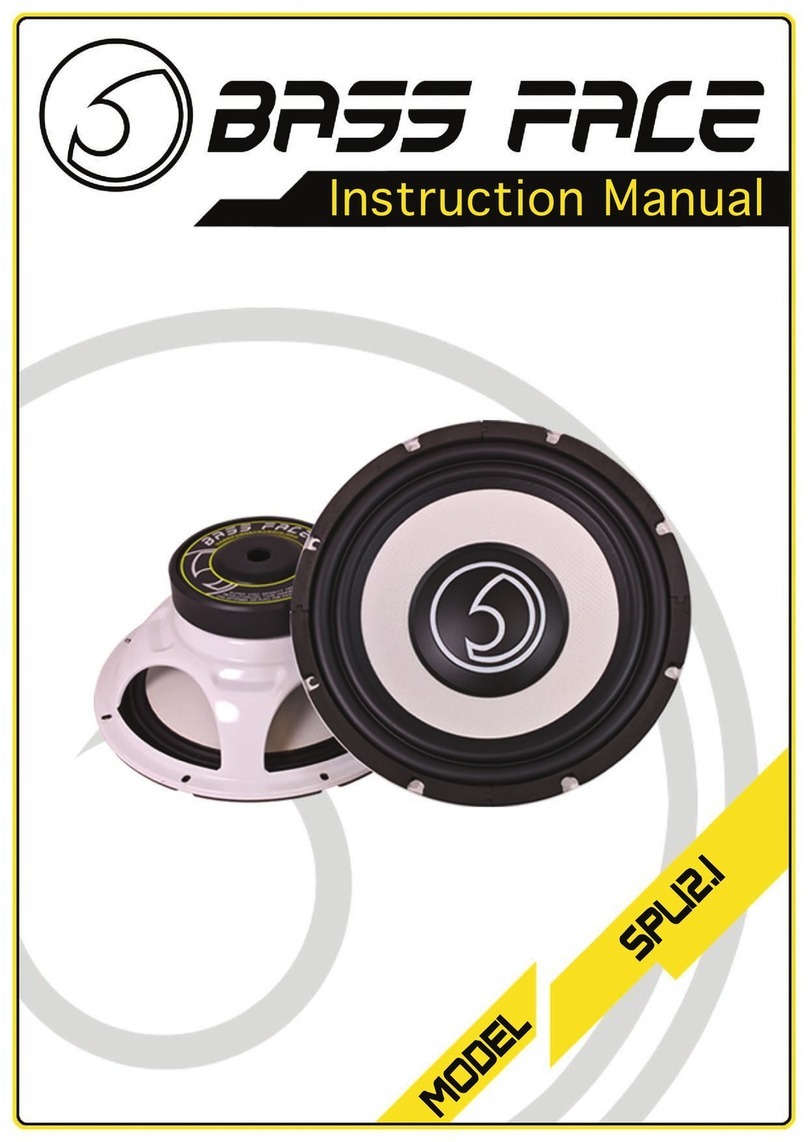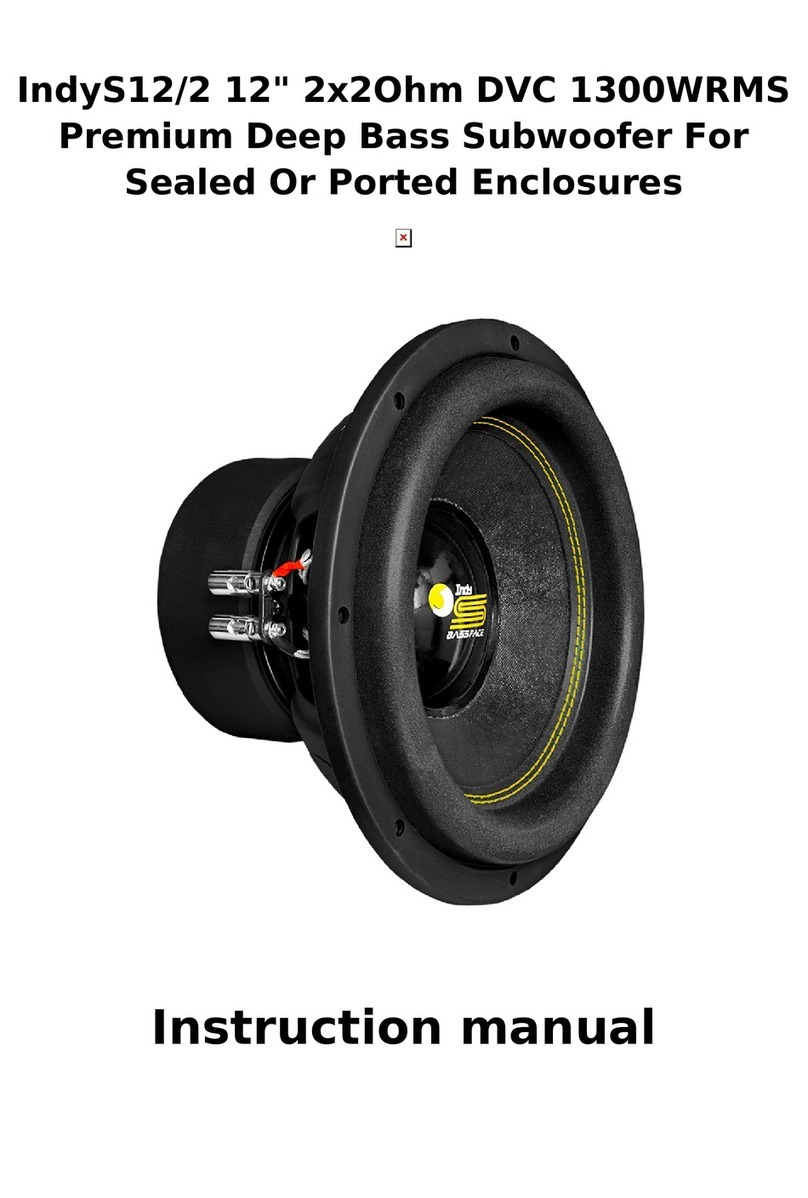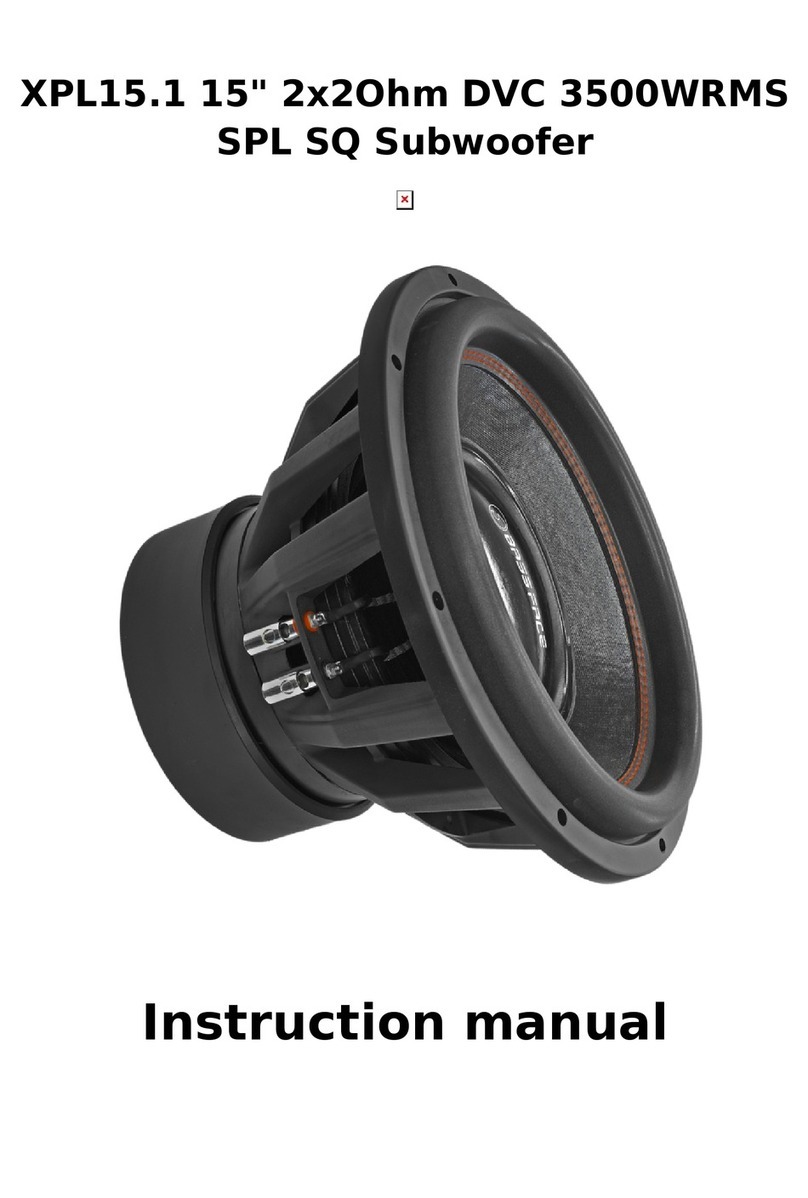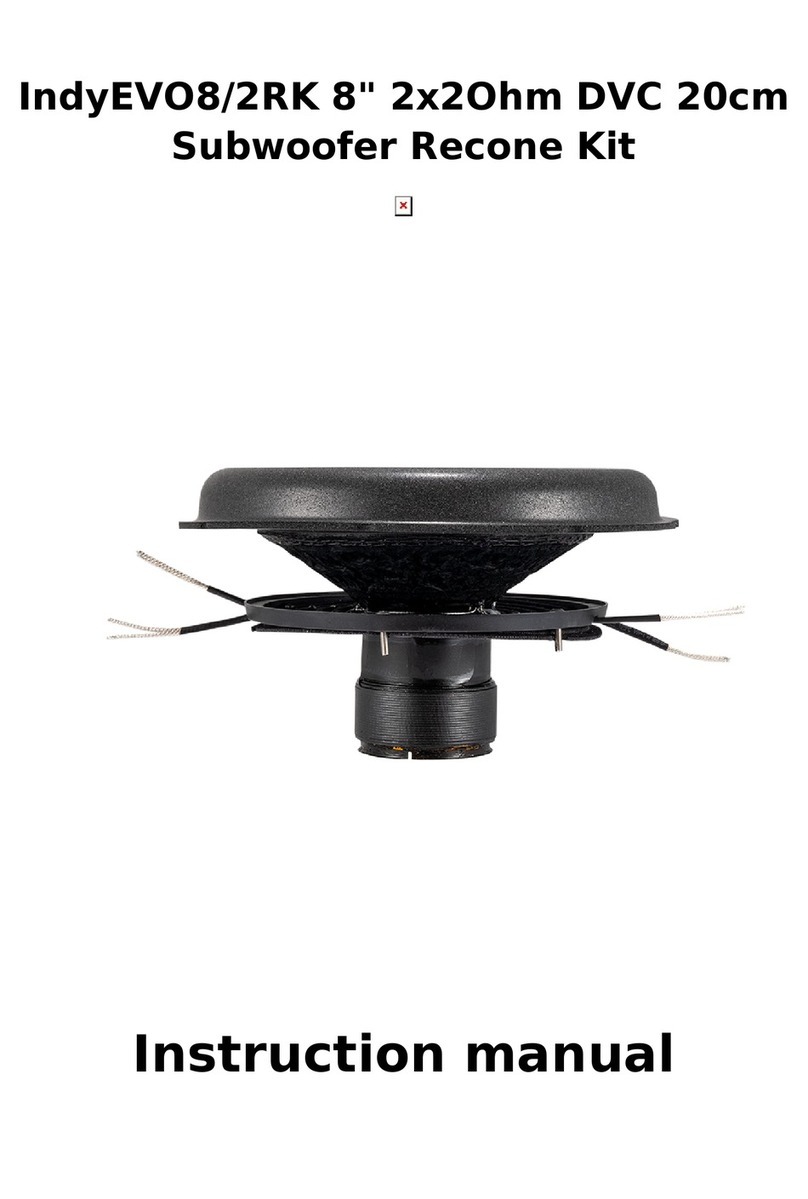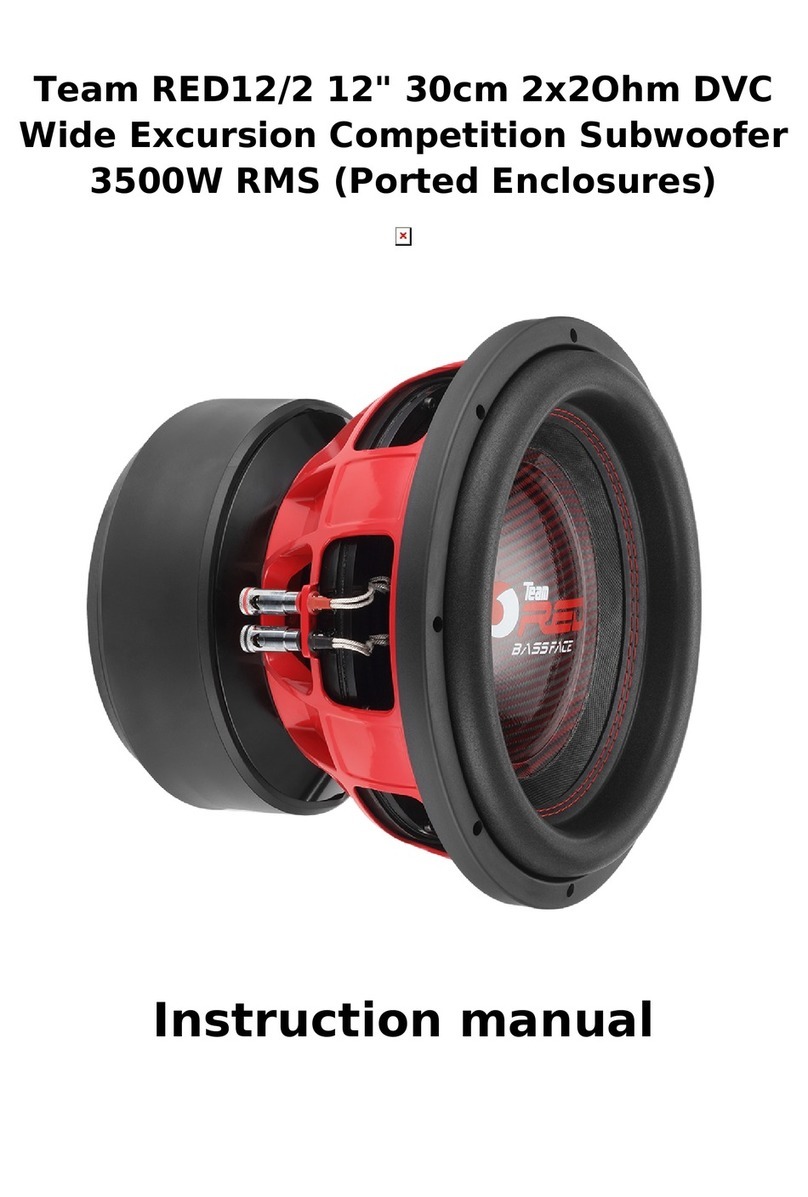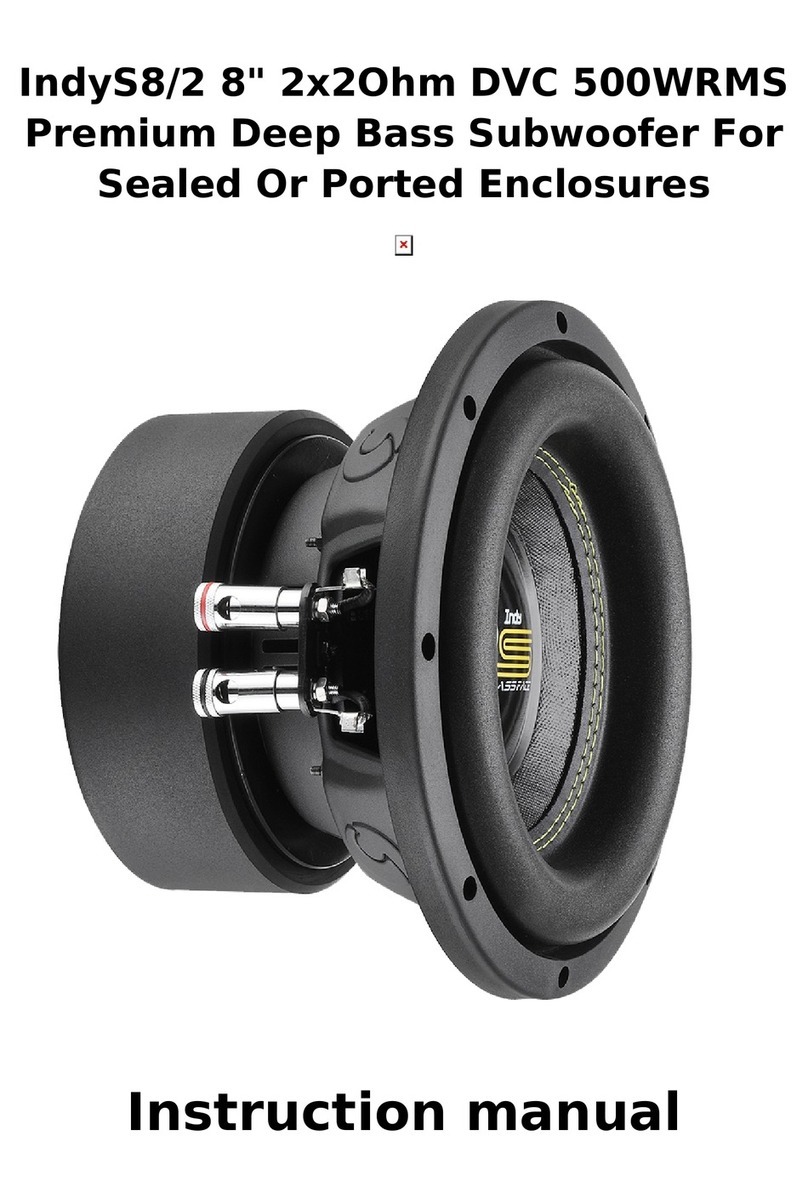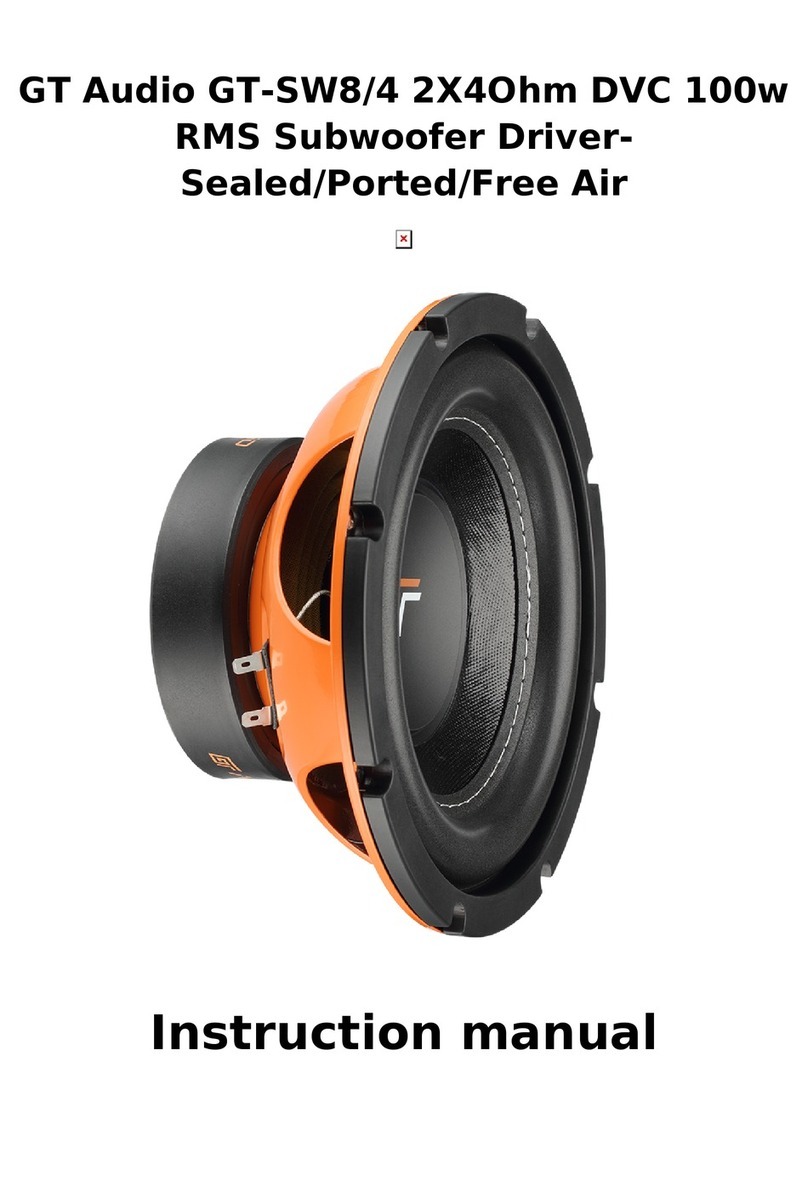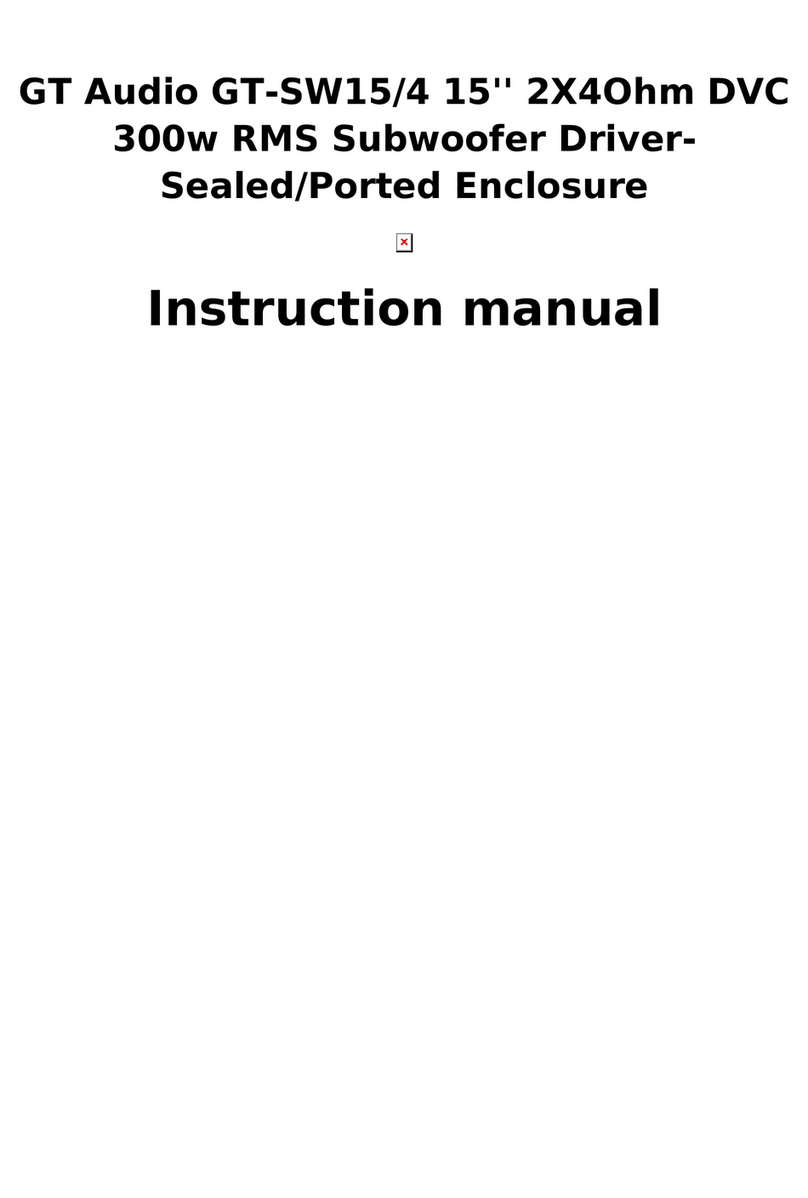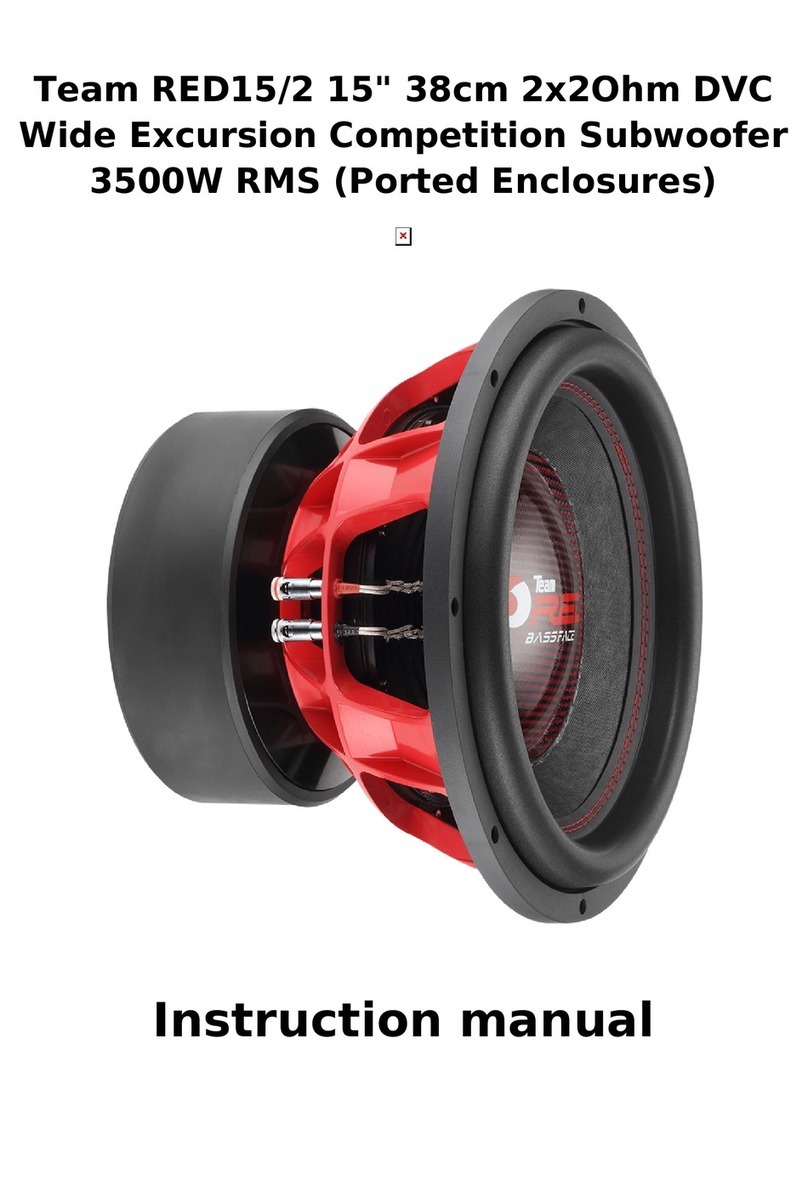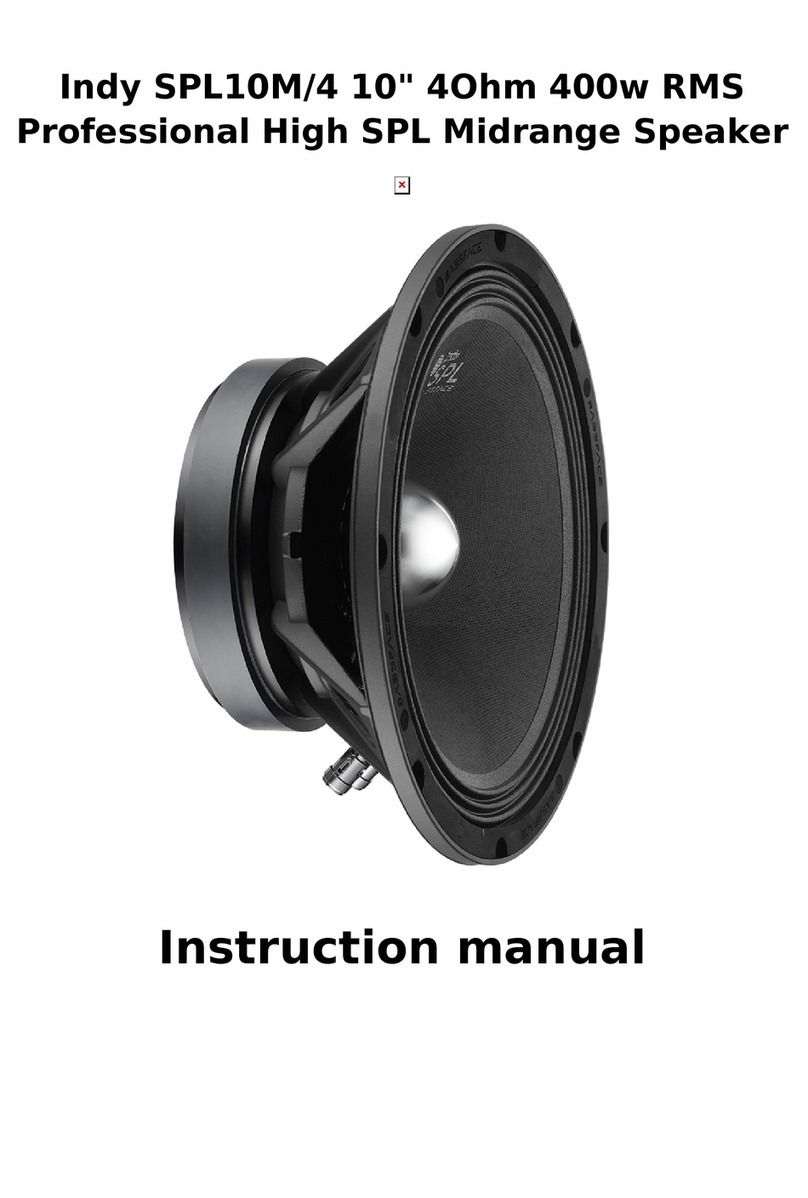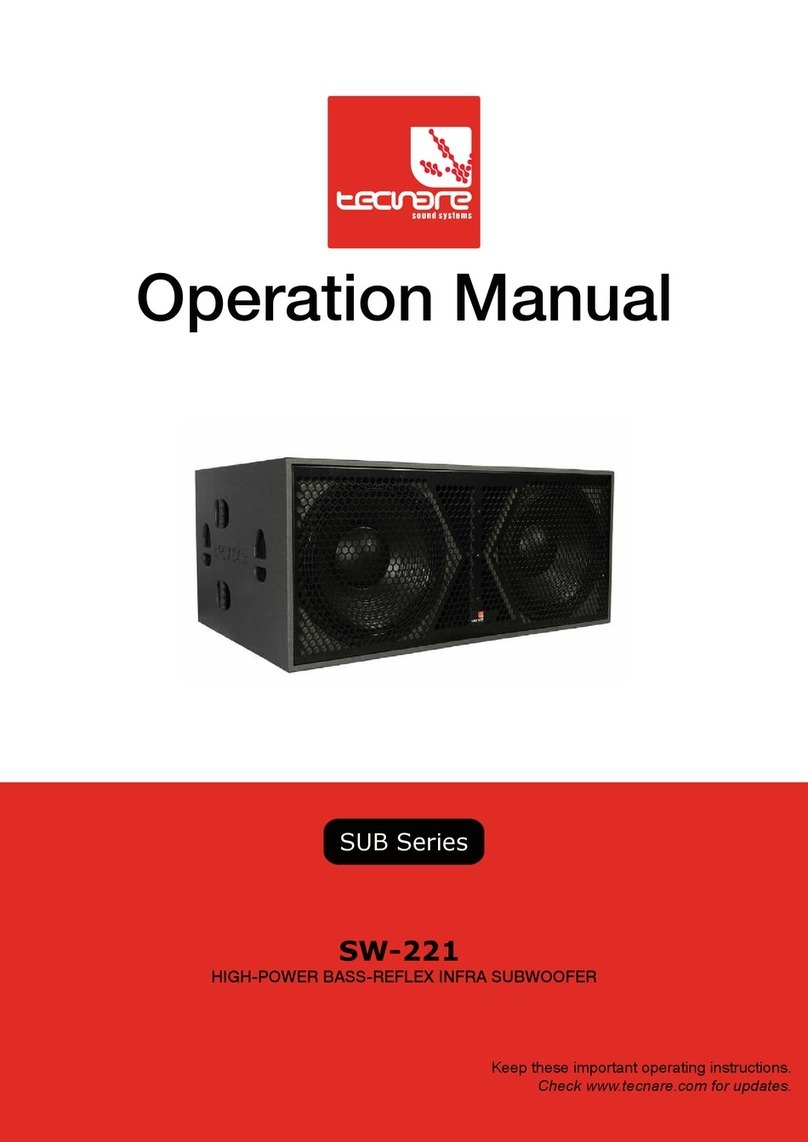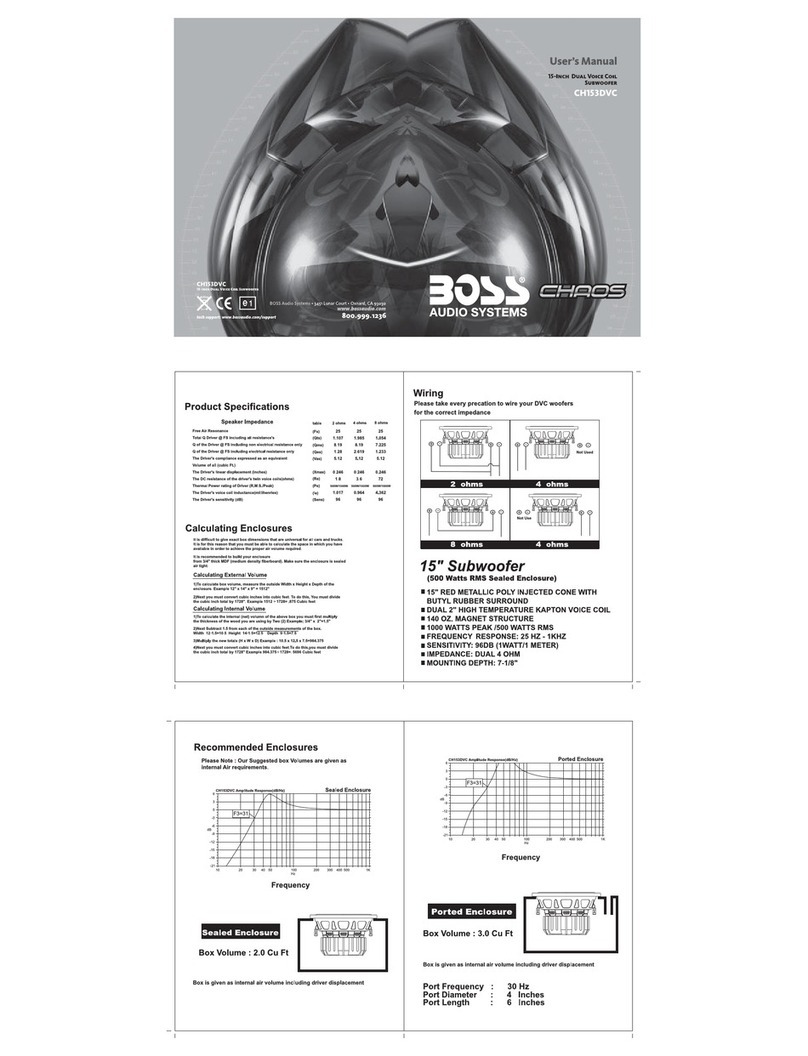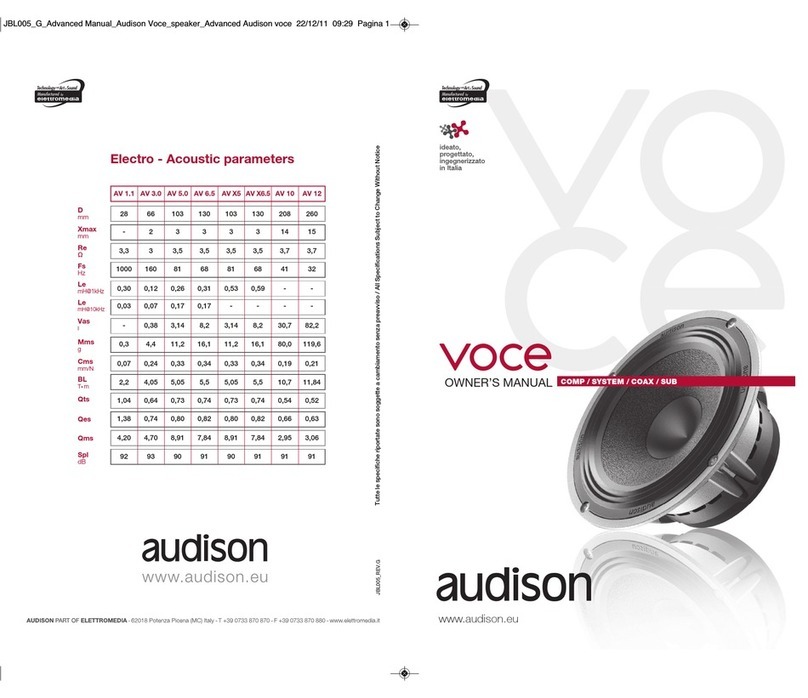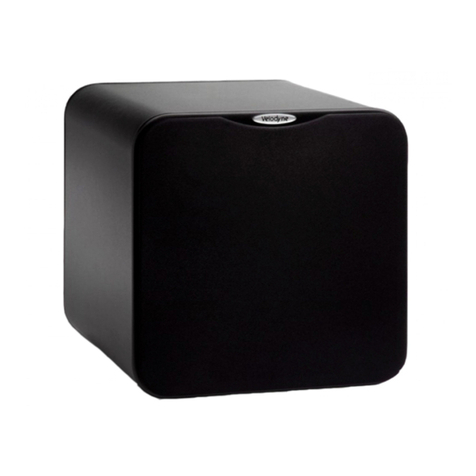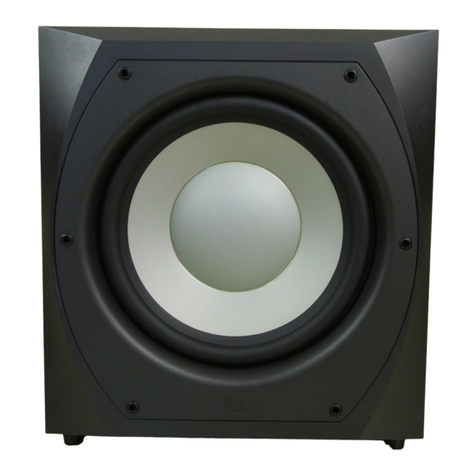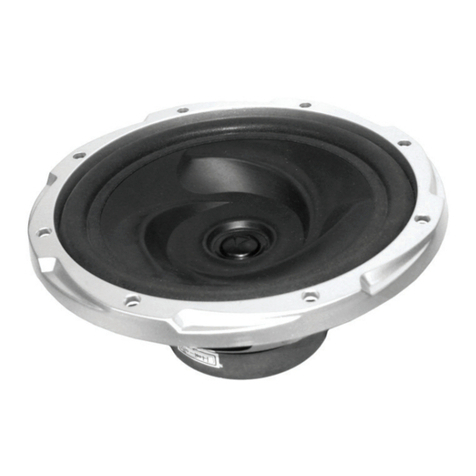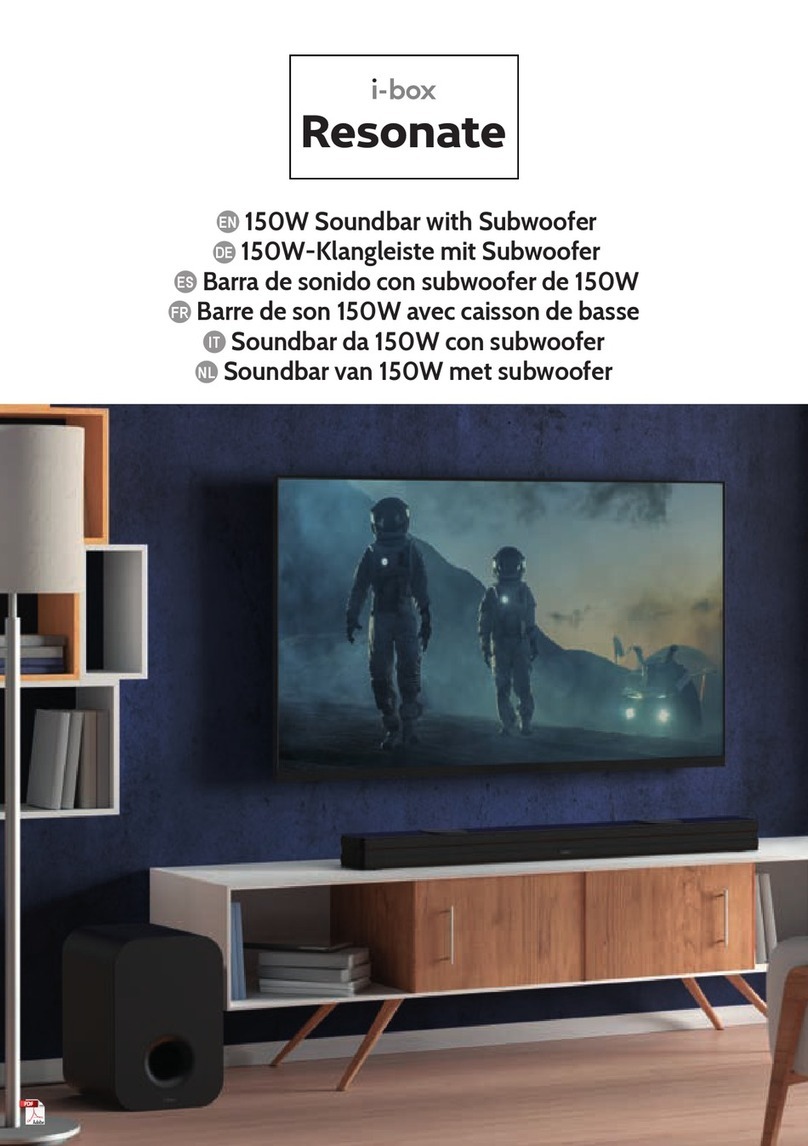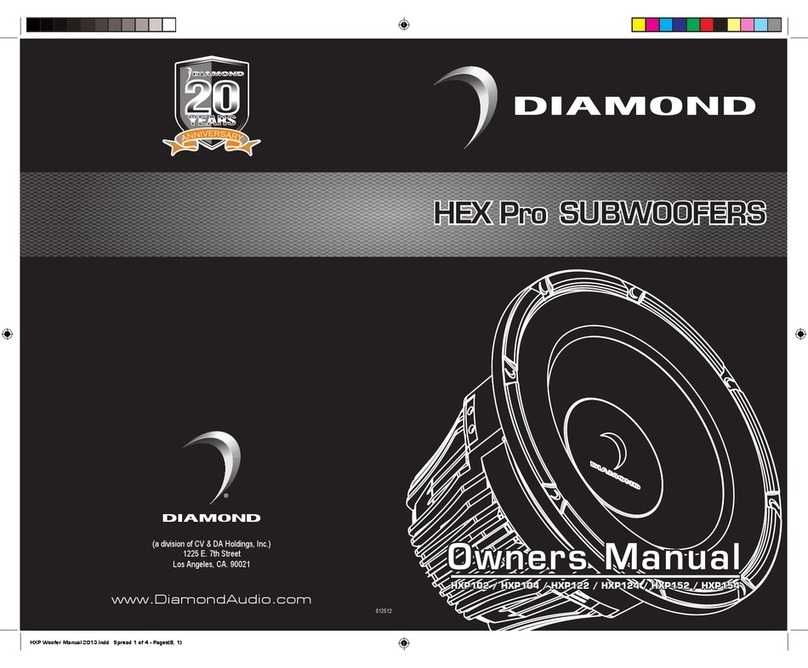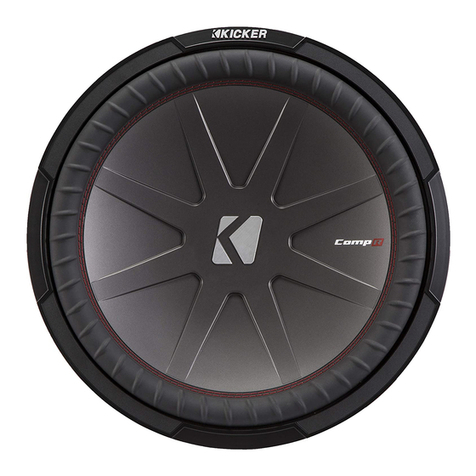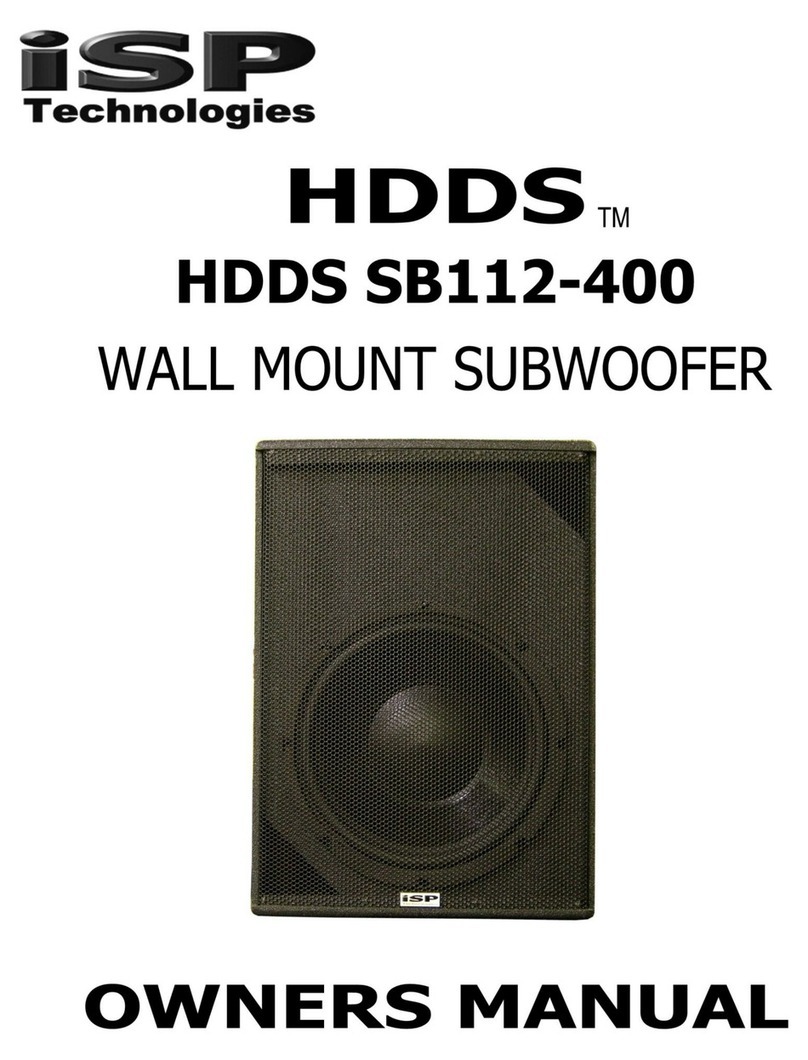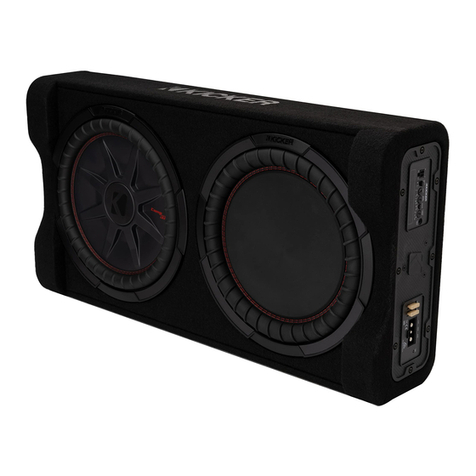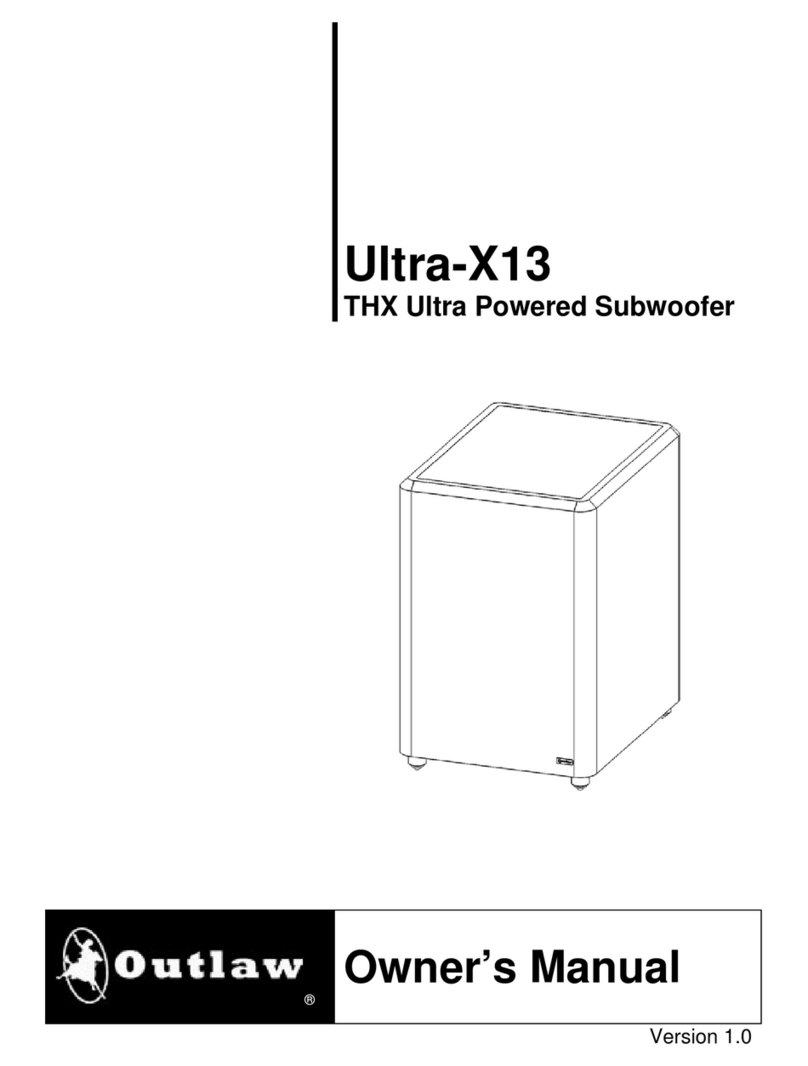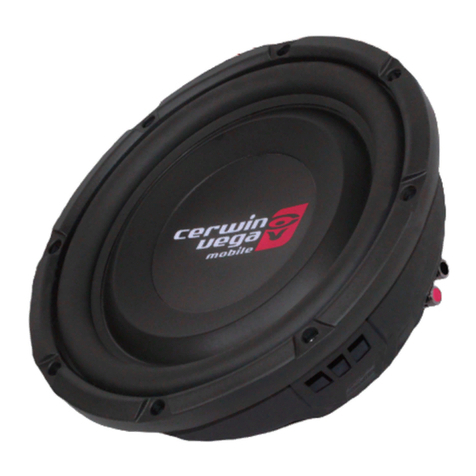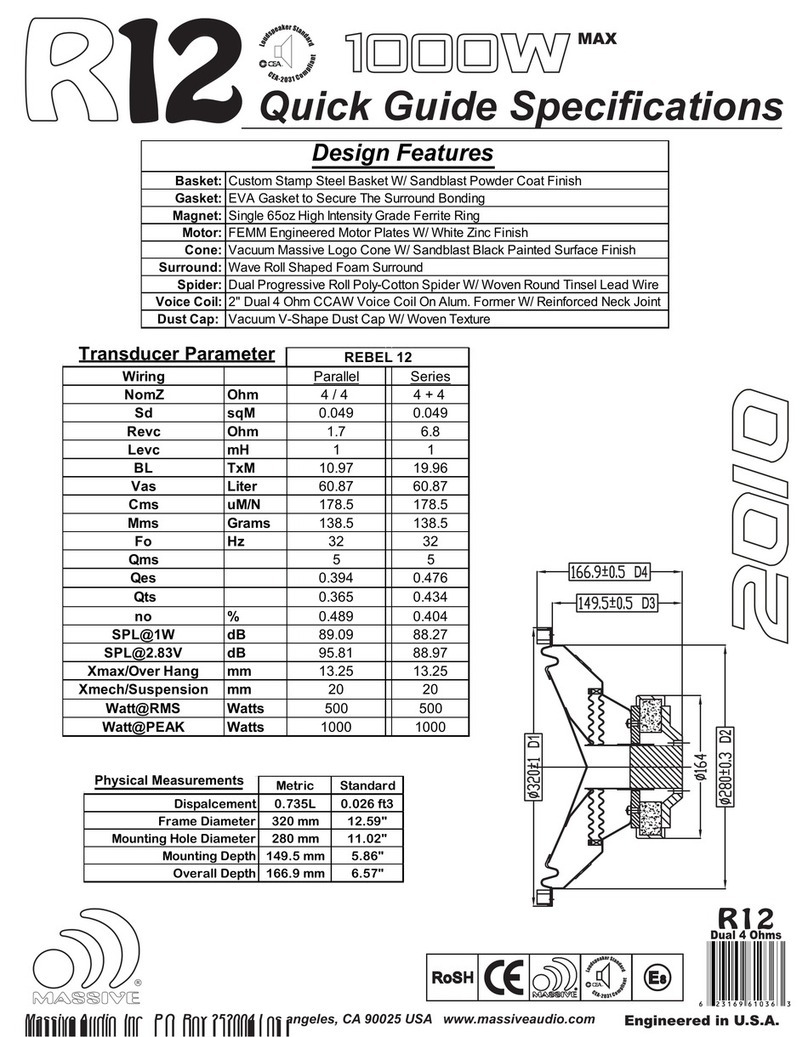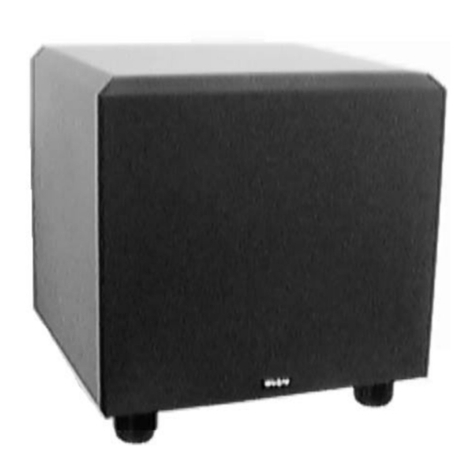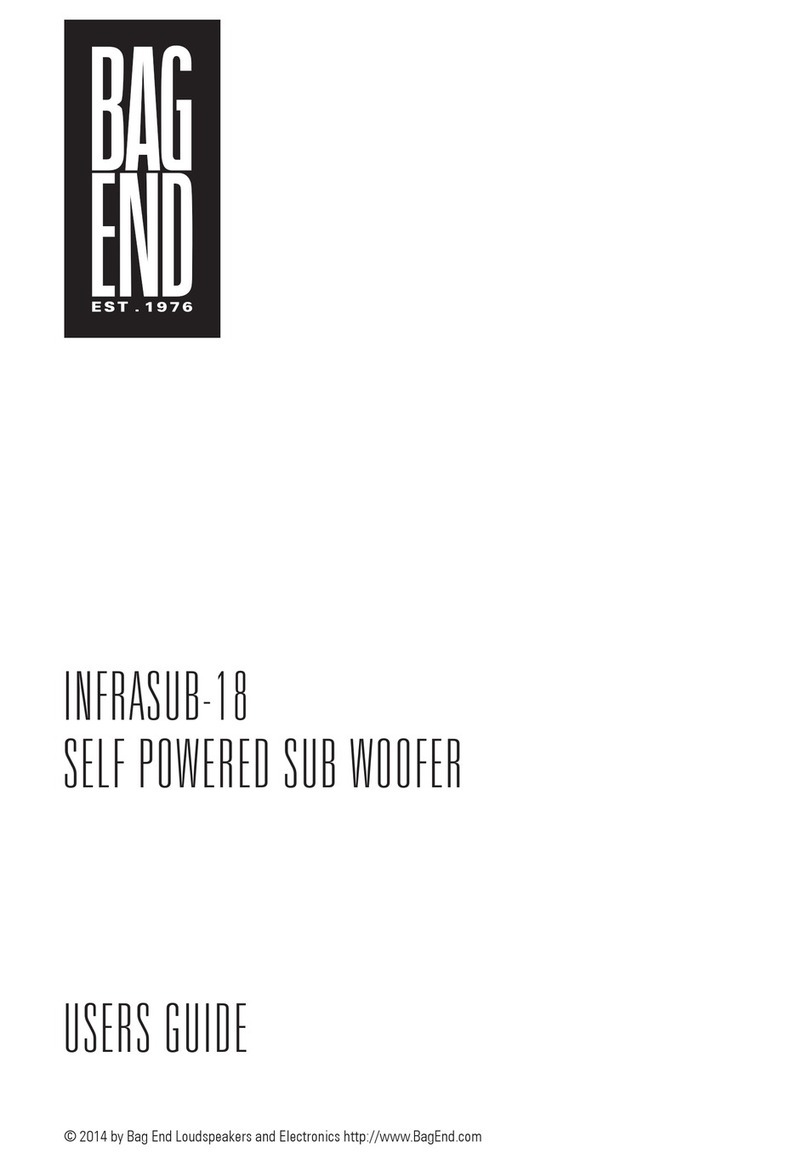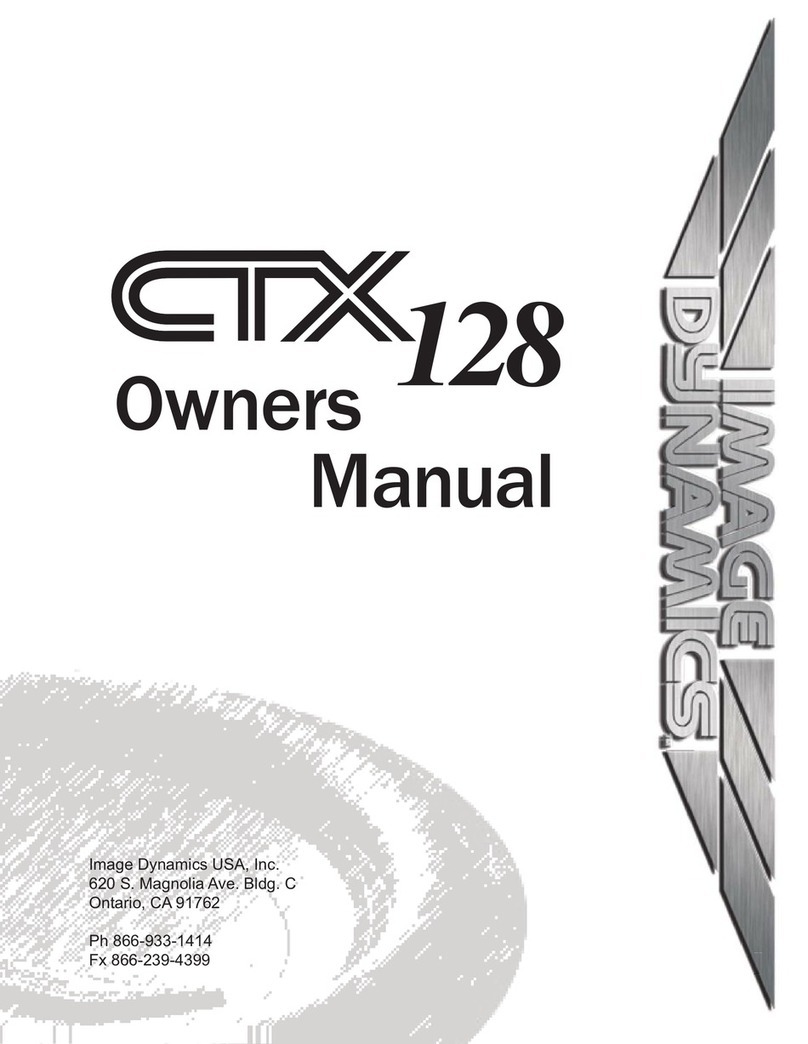
run the speaker for, say, an hour, recheck by switching everything off and pressing the
cone. You will feel that it is much softer. You should then run for another hour to complete
the initial break in. From here many more experienced people will wish to adopt their own
preferred break in procedure which is of course fine. From our perspective and from a
warranty point of view the minimum requirements are to run the driver as described for at
least 2 hours before installation in the final environment. Failure to carry out this process
will result in NO WARRANTY support on the speaker. If you have a failure of the speaker you
will be asked the warranty question to prove that you have read this manual and adhered
to the break in procedure. The answer to the warranty question is "BREAK-IN FOR THE
WIN!" Please repeat this phrase if you are asked to answer the warranty question. Later in
this manual we may reference specific break in procedures for this particular model. They
are recommended to be followed but not as mission critical as this initial period.
Before we move to the design and installation of the subwoofer it is important to
understand about woofer power handling. When we rate a speaker for power, we are
aiming to give the customer a good indication of the level of power that the speaker will be
able to cope with as a maximum value, when installed into a closed field environment (a
car!) using a suitably designed bass enclosure and running an intelligently set subsonic
filter and low pass crossover and when fed from an amplifier that is outputting clean, crisp
power (not a load of distortion!). To be clear, we are not attempting to rate for "continuous"
or "indefinite" performance - we are rating for a genuine, RMS value over the short term,
rather like what you might do to enjoy one song at absolute maximum level, or at the other
end of the spectrum if you are competing in sound pressure contests we are offering you
the "burp" RMS level. It is the system designer that is responsible for choosing equipment
that works in harmony together - speaker, enclosure, amplifier and source unit as well as
setup. There are vast differences in the fil power handling of a speaker system depending
on these factors, and "raw driver" theoretical power limits are only one factor in that fil
number. Heat management is the responsibility of the system designer, therefore, and we
will not accept warranty claims for burned coils under any circumstances. A burned coil is
always because of either bad setup (distortion) or bad heat management (too much power
for too long - choose a higher subsonic filter level, a lower crossover low pass point or allow
the hardware to cool down between periods of extreme load.) Lets face it, we all want to
run with a 10Hz subsonic in a massive enclosure and do huge numbers easily but that's not
possible in every case. You have to set expectations accordingly. A race engine might last 2
hours at the absolute maximum level of performance it is capable of. The same engine
running a lower state of tune might last many thousands of miles on the road. That's the
same engine in a different situation with different setup. Our speakers are no different than
this and the longevity will vary in a similar way depending on how close to their thermal
and mechanical limits they are run.
